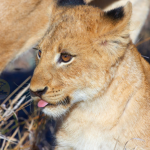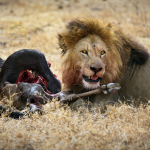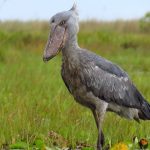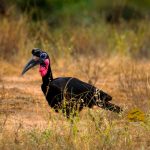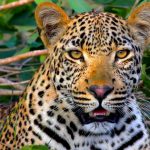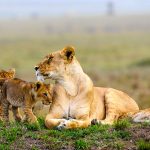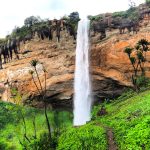The Leopards of Uganda: A Guide to the Elusive Big Cats.
Leopards in Uganda; The leopard “Panthera pardus” is often referred to as the ghosts of the African wilderness and is considered one of the most enchanting yet elusive creatures of Uganda. Big cats, known for their stealth, solitary nature, and unparalleled agility, remain both a symbol of the wild’s allure and a testament to the diversity of Uganda’s ecosystems. For travelers and wildlife enthusiasts, spotting a leopard is a treasured experience that combines patience, luck, and a bit of knowledge about their habits and habitats.
Description of a Leopard.
The leopard is a robust big cat, weighing from 30 to 80 kg, standing between 1.3 and 1.9 meters long-not including the tail, which is about 0.6 to 0.9 meters-long, and having a brightly golden-yellow coat with distinctive black rosettes and spots for good camouflage in diverse habitats. The combination of a relatively small head and broad skull, with large ears, provides the leopard with excellent hearing. Amber or green eyes allow for superb night vision, and their long tail is important both in balance and communication. This makes them well-adapted, elusive predators.
Interesting Facts about Leopards.
Weight: Adult leopards commonly weigh from 37 to 90 kg (80 to 198 lbs), with males generally larger than females.
Length: Including their long, thick tails that help with balance, leopards reach up to 2.5 meters or 8 feet in length.
Lifespan: They can live up to 12-15 years in the wild, though it is possible that with good care they could live longer in captivity.
Diet: It is an opportunistic hunter whose diet is simply variable: small antelopes, monkeys, rodents, birds, and sometimes fish. Their ability to easily adapt both hunting strategies and prey preference is one of the reasons leopards prove to be so resilient across habitats.
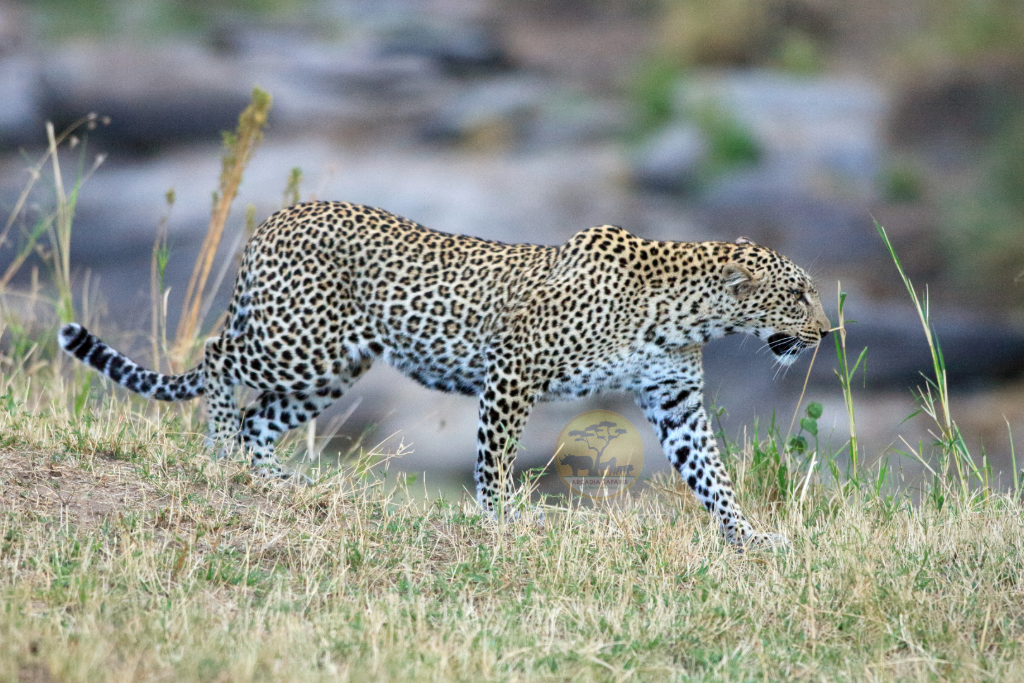
Where to See Leopards in Uganda.
Leopards are amongst the most wanted sights in Uganda because of their elusive beauty and stealthy nature. The varied habitats from savannas to thick forests in the country offer several sites that are prime for spotting these magnificent big cats.
Queen Elizabeth National Park.
Queen Elizabeth National Park ranks as one of the best places to see leopards in Uganda, with a remarkably high concentration in the Mweya Peninsula and Kasenyi Plains areas. The various ecosystems of the park, from savannas and woodlands to wetlands, have plenty of cover and hunting grounds for the cats. A few leopards also find their home in Ishasha Sector, which is normally popular for the tree-climbing lions, making it usually a popular spot among keen big cat spotters for the rare chance to see as many leopards on a single trip as possible.
Murchison Falls National Park.
Leopards are found in the thick savanna and woodland of Murchison Falls. The perfect time for viewing them is during early morning and late afternoon game drives when they prowl through the bush. In this park, they use trees as lookout points while on the prowl for a potential victim or climb a tree to retire and dine safely from scavengers.
Kidepo Valley National Park.
Located in northeastern Uganda, far-flung and remote, Kidepo Valley happens to be less visited but is one of the greatest spots in the country for viewing leopards. The open savannas and the rugged terrain provide perfect homes for the leopards. Viewing here can be rewarding, as because of the scant visitor flow, this park is a tranquil refuge for leopards to hunt, rest, and roam.
Lake Mburo National Park.
Lake Mburo National Park is the smallest of Uganda’s savanna parks, yet it’s amazingly home to healthy leopard population. The acacia woodlands and rocky outcrops of the park provide perfect ambush sites. Its evening game drives, as well as night drives allowed in this park, offer one of the best chances to see leopards on the prowl.
Leopard Behavior and Diet.
Leopards are ambush predators. They use stealth and camouflage to creep up on victims before launching a surprise attack. Their diet, adapted to the situation, is quite varied and one of the key factors to their survival in such varied landscapes. Their prey commonly includes antelopes, bushbucks, impalas, monkeys, and even hares and birds. Powerful and muscular, leopards pull kills up trees to keep them out of the reach of scavengers, mainly hyenas and lions.
These cats are solitary, except for the time of mating or when a mother raises a cub. The cubs stay with the mother for not more than two years, within which they get all the important techniques of survival, then leave to start independent life.
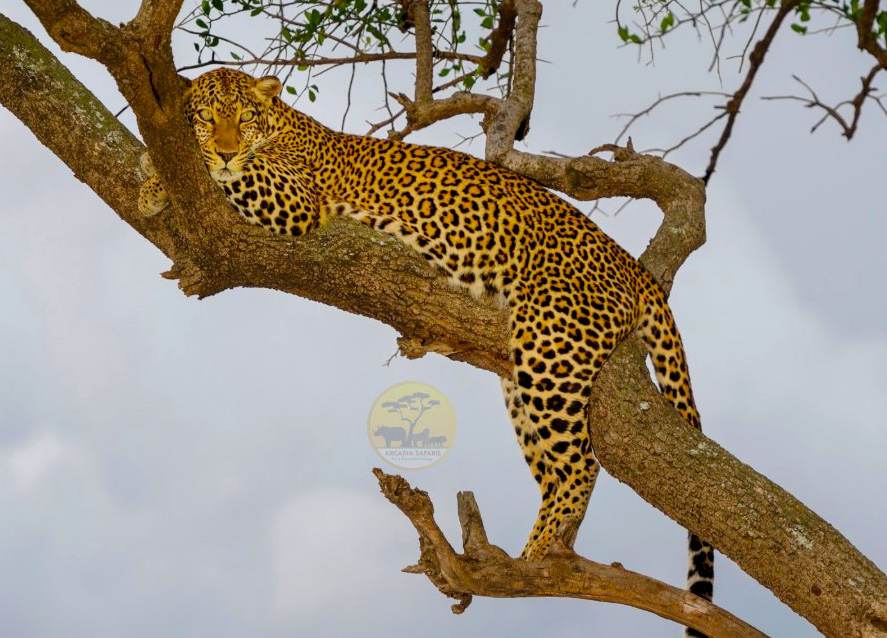
Conservation Status and Threats for Leopards in Uganda.
Currently, the leopard is listed as Vulnerable on the IUCN Red List because of habitat loss, human-wildlife conflict, and hunting for their pelts. In Uganda, their main threat includes deforestation and human encroachment upon their territories. Whereas national parks protect them in Uganda, some hunters trap them for bush meat or retaliate when local farmers lose their livestock.
However, these are threats that have been reduced by Ugandan wildlife authorities and several other conservation organizations through education, research, and leopard conservation at community levels. Human-leopard conflict reduction programs, such as the community-based schemes compensating farmers in cases of loss caused by leopards, go a long way in creating ownership and stewardship for these magnificent creatures.
Best Tips for Spotting Leopards in Uganda.
For successful leopard spotting in Uganda, observe early mornings and late afternoons when they are most active. Take on the services of local guides conversant with the topography and the behavior of animals in their natural habitat. Be on the lookout for tracks and other signs indicative of their presence. In that way and with patience and keen observation, you are likely to be able to spot these elusive big cats in their natural habitat.
Take Early Morning or Evening Drives: It is during dusk and dawn that leopards are most active. If your game drives fall at this time, then you can be sure you stand good chances of seeing them.
Listen for Warning Calls: Whenever a leopard is nearby, there are animals like baboons, birds, and antelopes that give alarm calls. Guides are knowledgeable in this light, and they can lead you closer to where the calls are coming from.
Use Binoculars and Stay Patient: Since the leopards use camouflage to their advantage, a good pair of binoculars will be handy in spotting movements in dense foliage or up high in trees.
Go with a Knowledgeable Guide: Local guides understand leopard behavior and know all the favored territories that leopards like to frequent. They know what to look for, including tracks, and to interpret animal alarm calls.
Consider Night Drives: In parks where night drives are allowed, like Lake Mburo, you will have this rare opportunity to view them as they hunt. Leopards do get bolder in the darkness of night; thus, night drives offer excellent viewing opportunities.

Our Best Packages to See Leopards in Uganda.
22 Days Best of Uganda Wilderness Adventure
18 Day Exploring Uganda Safari
15 Day Gorillas-Chimps and Big Five Safari
14 Days Uganda and Kenya Wildlife Safari
14 Day Uganda-Rwanda Wildlife and Primates Safari
10 Day Uganda Wildlife and Primates Safari
10 Day Highlights of Uganda Safari
8 Day Gorillas-Chimps and Big Five Experience
7 Day Murchison Falls with Chimps and Gorillas
6 Day Gorilla Trekking and Queen Elizabeth
Remarks about Leopards in Uganda.
Leopards are considered in Uganda within the perspective of landscapes that are wild and untamed. These big cats are symbolic of mystery and strength and help add to the attractiveness of varied ecosystems. To the conservationists, travelers, and nature lovers, leopards are a sign of resilience and beauty of the wild. Their adaptability shows the sensitive balance of species in Uganda’s diverse environments and makes every sighting not just exciting but a call for wildlife conservation, to preserve these elusive animals for generations to come.




